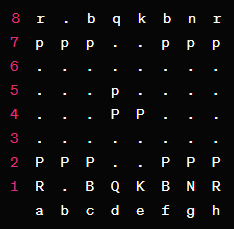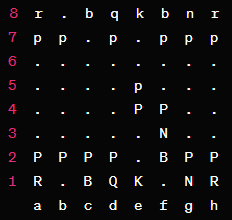Popular Openings and Strategies in Chess | Chess Tutorial Course: Beginner to Advanced - Class 6 PDF Download
| Table of contents |

|
| Basics of the Sicilian Defense |

|
| Basics of the Ruy Lopez |

|
| Basics of the Italian Game |

|
| 10 Golden Moves |

|
Chess openings play a crucial role in setting the tone and determining the course of a game. By understanding popular openings and their basic strategies, beginners can gain an advantage right from the start. In this article, we will explore the basics of three popular chess openings: the Sicilian Defense, the Ruy Lopez, and the Italian Game. Additionally, we will discuss 10 golden moves that can serve as guiding principles in the opening phase of the game.
Basics of the Sicilian Defense
The Sicilian Defense is one of the most popular and aggressive openings for Black. It begins with the moves 1.e4 c5. The idea behind the Sicilian Defense is to challenge White's central control and create imbalances early on. Here's an example of the starting position:

The Sicilian Defense offers various lines and sub-variations, making it a flexible and dynamic choice.
Basics of the Ruy Lopez
The Ruy Lopez, also known as the Spanish Opening, is one of the oldest and most traditional chess openings. It starts with the moves 1.e4 e5 2.Nf3 Nc6 3.Bb5. The Ruy Lopez aims to establish strong central control and develop the pieces harmoniously. Here's an example of the starting position:

The Ruy Lopez provides a solid foundation for both aggressive and positional play.
Basics of the Italian Game
The Italian Game is an opening that focuses on quick development and early threats. It begins with the moves 1.e4 e5 2.Nf3 Nc6 3.Bc4. The Italian Game aims to control the center and create attacking opportunities. Here's an example of the starting position:

The Italian Game sets the stage for aggressive piece development and potential kingside attacks.
10 Golden Moves
While chess openings offer countless possibilities, certain principles can guide your decision-making process in the opening phase. Here are 10 golden moves to keep in mind:
- Control the center: Aim to occupy the central squares (d4, d5, e4, e5) with your pawns and pieces.
- Develop your pieces: Bring your knights and bishops out from their starting positions to active squares.
- Castle early: Safeguard your king by castling, usually to the kingside, providing it with better protection.
- Avoid unnecessary pawn moves: Each pawn move weakens a square, so prioritize piece development over excessive pawn moves.
- Connect your rooks: Develop your rooks by connecting them along the back rank through castling or open files.
- Maintain pawn structure: Be mindful of pawn exchanges to prevent weaknesses and maintain a solid pawn structure.
- Be mindful of piece coordination: Coordinate your pieces' movements to work together harmoniously.
- Develop with threats: Aim to make developing moves that simultaneously threaten your opponent's position.
- Be cautious with the queen: Avoid bringing the queen out too early, as it can become a target for your opponent's pieces.
- Be aware of tactics: Stay alert for tactical opportunities such as forks, pins, and skewers.
By following these principles, you can establish a solid foundation in the opening and set yourself up for success in the middlegame.
|
45 videos|14 docs|5 tests
|




















